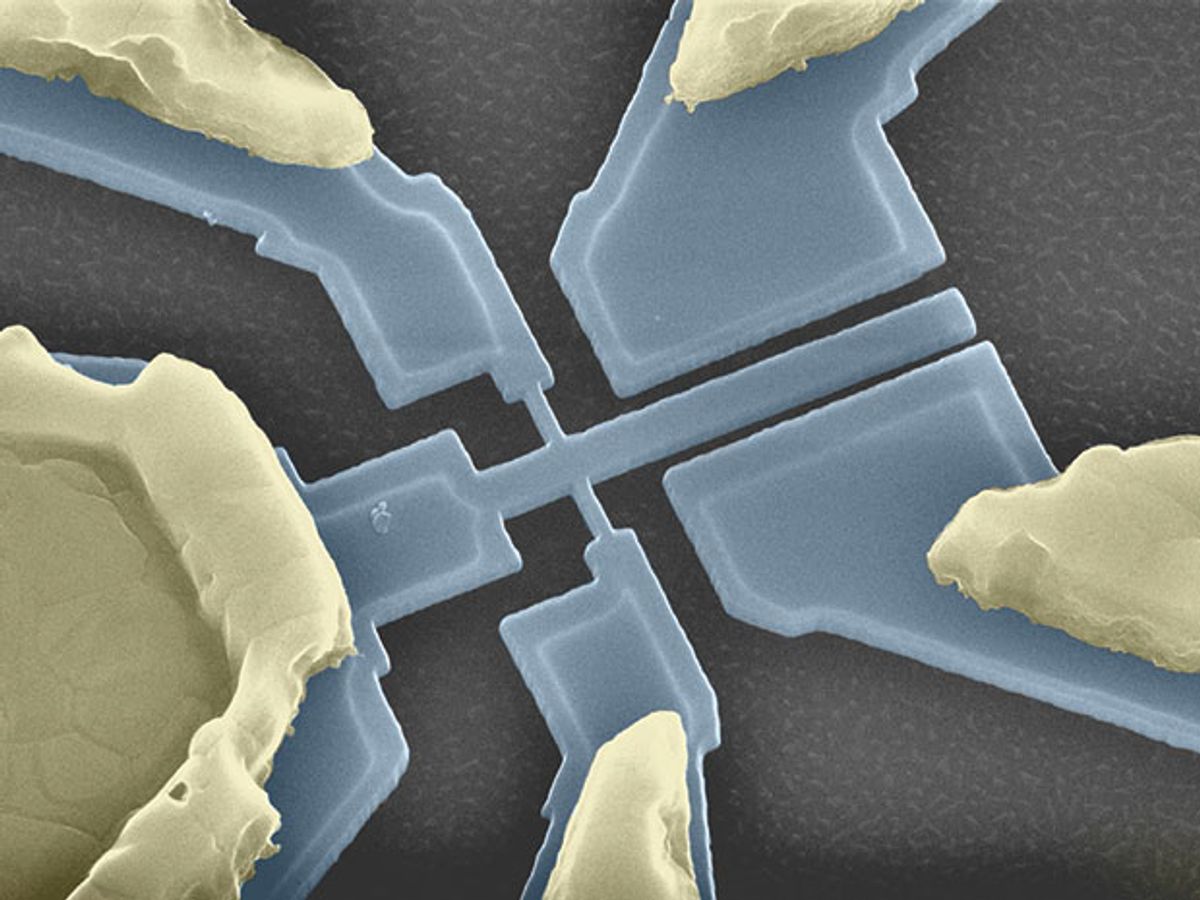The expectation has been that nanoelectromechanical systems (NEMS) will replace its technological predecessor microelectromechanical systems (MEMS) in the varied range of applications for which MEMS are currently used. However, the emergence of the usurper technology has not been without some struggles.
There have been durability issues with NEMS devices and there has also been the nagging issue that they never seem to perform quite up to their theoretical limits.
Now in joint research between the Commissariat a l'Energie Atomique (the French Atomic Energy and Alternative Energies Commission or CEA) and the University of Grenbole-Alpes, researchers have taken on the challenge of addressing this shortfall in performance for NEMS devices—in particular nanoresonators—by looking for better ways to measure their performance.
Nanoresonators, which are often used as sensors, can be thought of as a device that vibrates at a particular frequency like a guitar string. When a molecule or biological particle comes in contact with the surface of the nanoresonator, the frequency changes, like when a finger moves up and down a guitar string. By measuring the extent to which the nanoresonator’s frequency is changed, you can identify the substance in question.
Needless to say, these devices are extremely sensitive, which is great for identifying the smallest particles, but they are also so sensitive that changes in temperature can change their frequency as can the mere act of measuring their sensitivity.
The result has been that scientists have had to disregard some fluctuations in frequency or make some kind of compensation for them, which is not ideal when you’re trying to measure minute changes in frequency.
In research published in the journal Nature Nanotechnology, the French scientists were looking for a way to improve the measurements for the frequency response of nanoresonators to make them better at telling us what they are sensing.
“Usually a resonator is driven by one drive signal at one single frequency, which allows the measurement of the resonator’s response at this frequency,” explained Sébastien Hentz, Senior Scientist, CEA LETI, in an e-mail interview with IEEE Spectrum. “You get one single piece of information. But there are two unknowns: jitter in the amplitude of the signal, and jitter in the mechanical resonance frequency.”
With the usual technique, both of these jitters are mixed and some information is missing to infer the contribution of each one of them. Hentz and his colleagues have offered a different technique that consists of driving the resonator at two different frequencies simultaneously (both close to the resonance frequency).
“In this way, we have two pieces of information,” said Hentz. “We can work on that by studying correlations, working on differences, etc. to obtain the two unknowns.”
The technique has not identified the source of the two jitters, but does tell the scientists where to look, according to Hentz. While theoreticians have thought of a few physical phenomena that could explain this frequency jitter, none of those phenomena explain these observations, according to Hentz.
Hentz added:
“So far, people have always tried to decrease jitter in amplitude in order to improve their device performance. In vain! People have always neglected jitter in the resonance frequency. We have shown this is a hard limit to our performance by several orders of magnitude above the jitter in amplitude. Our paper is a call to the research community to find the source of this frequency jitter.”
Dexter Johnson is a contributing editor at IEEE Spectrum, with a focus on nanotechnology.



